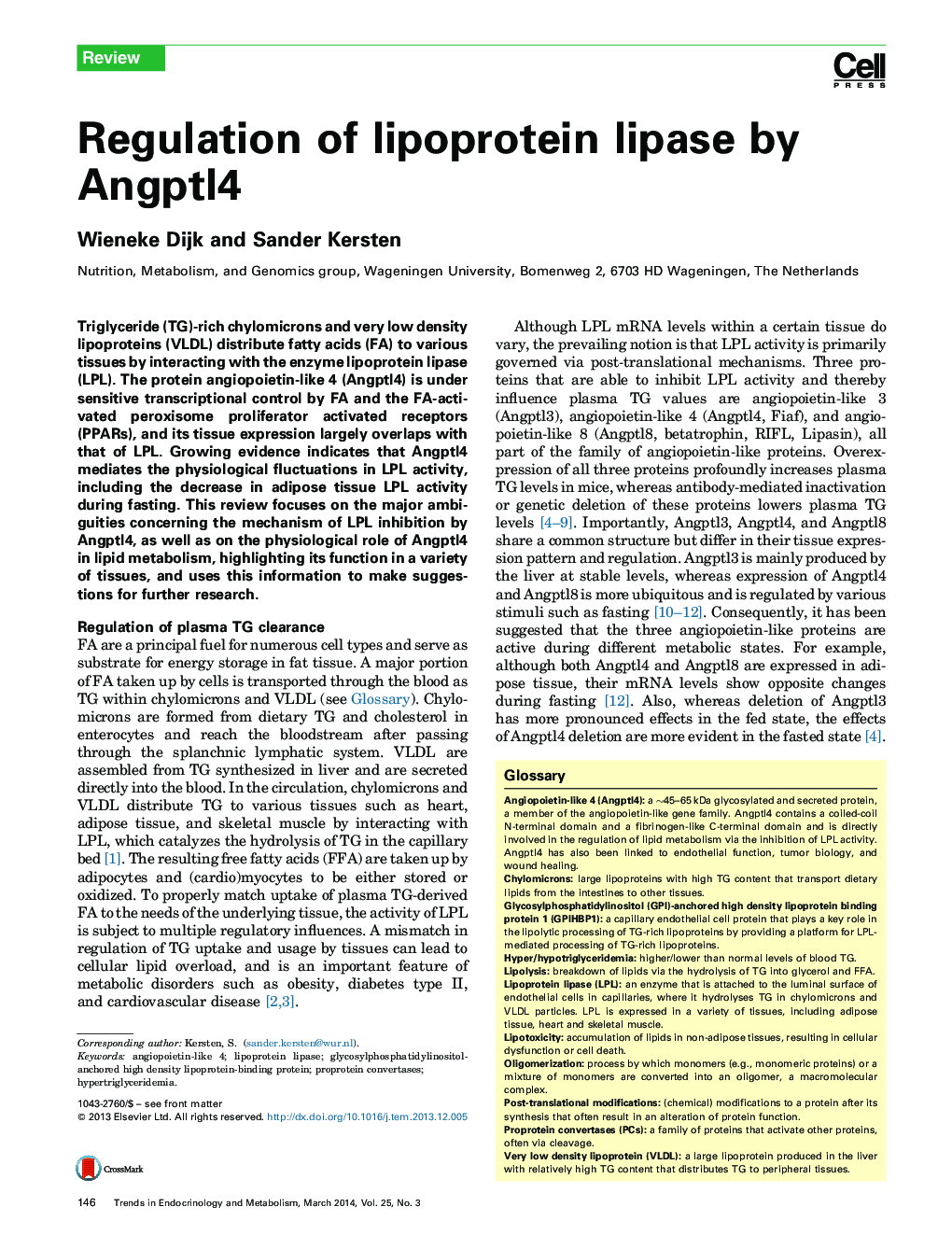| Article ID | Journal | Published Year | Pages | File Type |
|---|---|---|---|---|
| 2810341 | Trends in Endocrinology & Metabolism | 2014 | 10 Pages |
•Angptl4 is a main regulator of LPL activity in a variety of tissues during different physiological situations, including fasting.•Angptl4 inhibits LPL activity via a mechanism that involves dimer-to-monomer conversion of the LPL protein and/or competitive inhibition.•Cleavage and oligomerization of Angptl4 may alter the capacity of Angptl4 to inhibit LPL activity.•Angptl4 is under sensitive transcriptional control of fatty acids and the fatty acid-activated PPARs.
Triglyceride (TG)-rich chylomicrons and very low density lipoproteins (VLDL) distribute fatty acids (FA) to various tissues by interacting with the enzyme lipoprotein lipase (LPL). The protein angiopoietin-like 4 (Angptl4) is under sensitive transcriptional control by FA and the FA-activated peroxisome proliferator activated receptors (PPARs), and its tissue expression largely overlaps with that of LPL. Growing evidence indicates that Angptl4 mediates the physiological fluctuations in LPL activity, including the decrease in adipose tissue LPL activity during fasting. This review focuses on the major ambiguities concerning the mechanism of LPL inhibition by Angptl4, as well as on the physiological role of Angptl4 in lipid metabolism, highlighting its function in a variety of tissues, and uses this information to make suggestions for further research.
